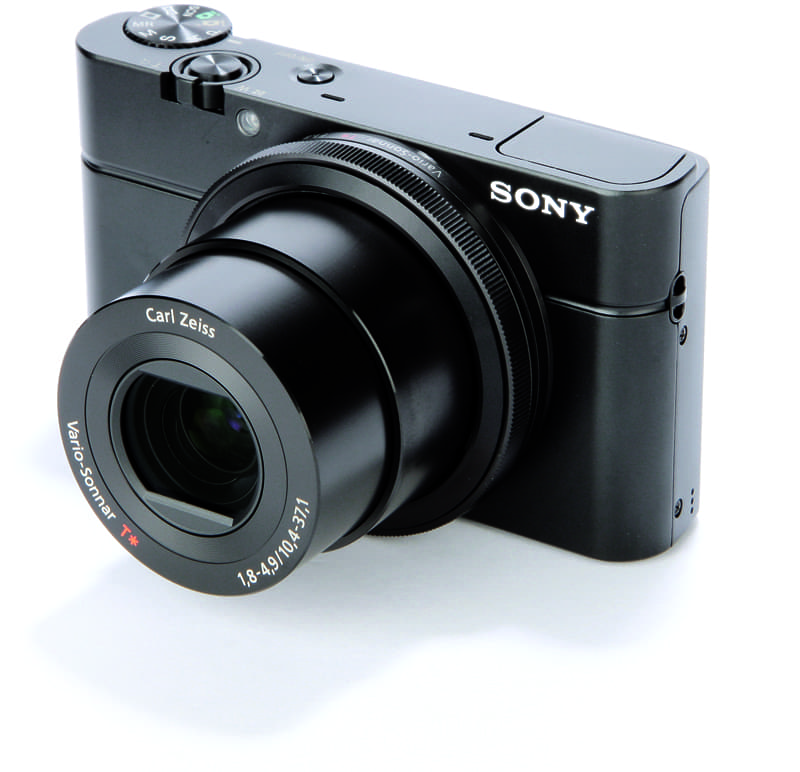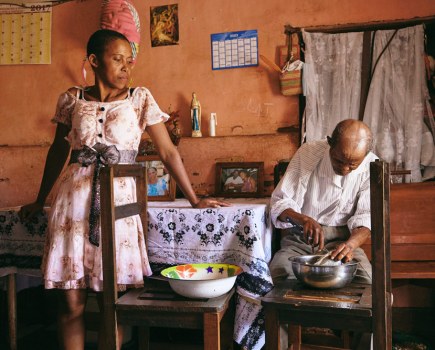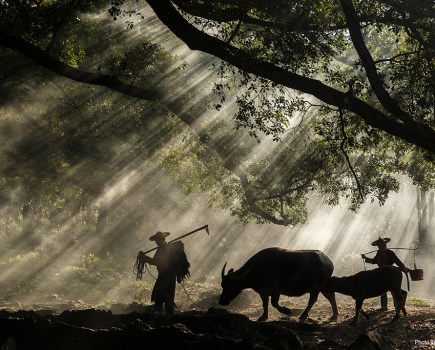Sony
enters what it calls the ‘expert’ compact camera market with its flagship Cybershot, the RX100, proudly stating that it is the company’s best Cyber-shot to date. On paper
and in the hand, the camera appears to be an amalgamation of different
class-leading compact cameras; its pocket size and simple design brings to
mind Canon’s PowerShot S100, the fixed 28-100mm f/1.8-4.9 Carl Zeiss lens is akin to
the Zuiko lens on the Olympus XZ-1, while the imaging sensor is 4x larger
than a standard 1/2.3in compact at 1in (13.2×8.8mm) equals a Nikon 1 system
camera.

With
a sensor much larger than a regular compact camera, the RX100 should be able to
provide a high resolution and improved low-light performance as the larger photosites receive
more light (which Sony claims are 3.6x the size of its own 18.2-million-pixel
Cyber-shot HX20V camera with 1/2.3in sensor).
The sensor is a CMOS type with a 20.2-million-pixel resolution and the ISO
range is 80-6400, which can be expanded to ISO 25,600 in the multi-frame noise
reduction (NR) mode. 1080 HD video files at 50p, raw and JPEG images are
processed using the same Bionz processor found in the Sony NEX-7.
Other
key features include a 10-frames-per-second burst high-speed shooting mode,
available in a 1 second burst for full-resolution files. The camera makes use
of these high speeds for multi-frame shooting modes, such as HDR which claims up
to ±6EV range, and certain picture effects, such as Rich Tone Monochrome.
The
lens
As
previously mentioned, the Carl Zeiss lens covers an effective 28-100mm range,
with f/1.8-4.9 maximum aperture and minimum f/11. At the 50mm focal length, the
maximum aperture is f/3.2. This focal range is ideal for general use.

The
sensor size gives a 2.7x focal length magnification factor, so the lens is a true 10.4-37.1mm and, likewise, the aperture is multiplied by 2.7 to give an
indication of the equivalent full-frame depth of field. This means the maximum
f/1.8 aperture approximates to f/4.9 in a camera such as the Sony
Alpha 900, whereas the f/1.8 aperture in the Olympus XZ-1 is equivalent to
around f/8. The lens’s 3.6x zoom can be doubled by using clear image zoom,
which also features in the latest Alpha cameras like the Alpha 57.
 28mm
28mm
 100mm
100mm
A
physically larger sensor is appealing but it requires a larger lens,
which is usually the key trade-off between size and image quality. Indeed, when
held next to the Canon PowerShot S100, the RX100 lens has a lot more glass.
However, this has not affected the overall bulk of the
camera as much as one would expect, and the RX100 has only a marginally bigger
body. The lens comprises 7 elements in 6 groups, including one aspherical
type and one optical image stabilisation (OIS) element. Each element features
the company’s ‘T’ coating, while circular aperture blades are designed to give
pleasant out of focus areas (bokeh). A downside to larger sensors is often the
minimum focus depth, but here it is an impressive 5cm at the widest focal
length, or 55cm at the tele-end.
In
use
An
immediate impression of the RX100 is how well it is made. Its design is simple and elegant with a smooth all-black exterior small enough to slip comfortably into a trouser
pocket. The only textured part is the rubber thumb grip on the rear. The tough
aluminum body is going to last, and from the couple of days I have used the
camera it is resistant to scratches and markings.
 100mm
100mm
Dominating
the rear is a 3.0in VGA LCD screen equipped with Sony’s Trublack
technology. The resolution of the screen is a whopping 1.229-million-dots,
which includes a white pixel for every red, green and blue one (RGB). We have
been impressed by this type of setup in Ricoh’s GR Digital IV. Sony claims this
setup increases contrast and that the screen is 2.5x brighter than the HX20V,
yet consumes 35% less power than a standard RBG screen. Indeed with a new
NP-BX1 battery, which Sony expects to bring into some of its future compact
cameras, the battery life is claimed to provide up to 330 shots, which is good
for a compact camera.
 28mm
28mm
Like
the Canon PowerShot S100, the lens features a control ring, which can be used to
control aperture or any of a number of key exposure controls including white balance and ISO, as well as manually focusing. With the
camera in manual exposure mode, the lens control ring can work with the control
wheel on the rear of the camera to adjust shutter speed and aperture, which
handily means the user does not have to press another button to switch between the two.
Many
of the buttons can be customised, and up to 7 different controls can be
individually added to the menu accessed via the function button. Furthermore,
the ‘memory’ menu, accessed via its dedicated position on the shooting dial,
stores up to 3 exposure setups for quick access to regularly used
settings.
Sony
Alpha users will be immediately familiar with the in-depth menu and the level
of control available on the RX100. Neat areas of handling include the peaking
control, designed to indicate the point of focus and overexposed
highlights.

Images
I
have taken several images with the RX100, and early impressions are very
positive. For a camera of its size, the high resolution of the sensor
produces unrivalled file sizes and also a high level of detail. Colours in JPEG
files are bright and punchy without being overly saturated or ‘unreal’, while
there is plenty of detail in highlight and shadow areas, indicating the
camera’s dynamic range is rather good. The fixed Carl Zeiss lens appears to be
crisp over most of the frame, with minor drop off at the edges at the
wide focal length. We will comment in more detail on the image quality when the
camera receives a full test in the coming weeks.

At
the time of writing, the estimated price of the Sony Cyber-shot RX100 is around
£550.







